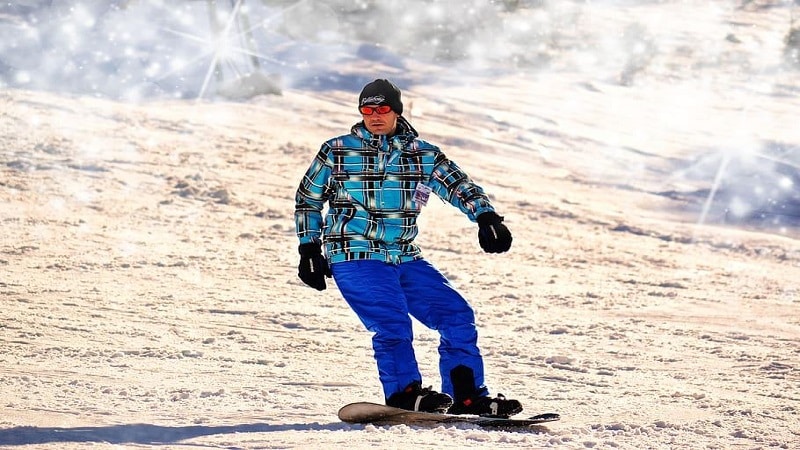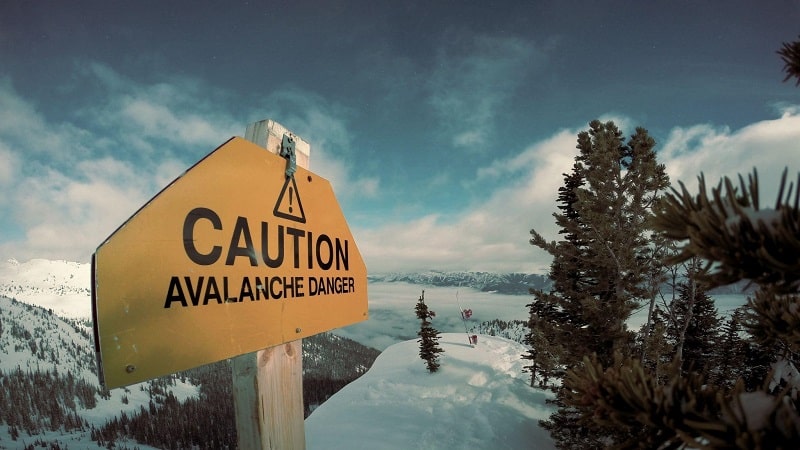If you’re planning on hitting the slopes this winter, you might be wondering just how much those snow sleds weigh. After all, who wants to lug around a heavy sled when you’re trying to have fun in the snow? In this article, we’ll explore the weight of snow sleds and give you some insights into what you can expect when it comes to choosing the right sled for you. So, whether you’re a thrill-seeking daredevil or just looking for some winter fun, keep reading to find out more about the weight of snow sleds.
Imagine yourself gliding down a snowy hill, the wind rushing through your hair as you zoom past your friends. But before you can experience the exhilaration of sledding, you need to consider the weight of your sled. How much does a snow sled actually weigh? In this article, we’ll dive into the world of snow sled weights and help you understand the factors that can influence the weight of a sled. So, if you’re ready to hit the slopes and need some guidance on choosing the right sled, keep reading to find out more.
Are you ready to embrace the winter wonderland and take on the slopes with a snow sled? Before you do, it’s important to know how much weight you’ll be dealing with. The weight of a snow sled can vary depending on several factors, and in this article, we’ll break it down for you. From traditional wooden sleds to modern plastic ones, we’ll explore the different types of sleds and their respective weights. So, if you’re curious about the weight of snow sleds and want to make an informed decision, keep reading to find out more.
What is a Snow Sled?
When it comes to winter fun, few things can compare to the excitement of sledding down a snowy hill. And at the heart of this thrilling adventure is the snow sled. A snow sled is a flat-bottomed device that allows you to glide across the snow, providing hours of entertainment and joy for both kids and adults.
Snow sleds come in various shapes, sizes, and designs. From classic wooden sleds to modern plastic ones, there is a sled out there that suits every rider’s preference. You’ll find sleds with handles for added stability, sleds with built-in brakes for easy stopping, and even sleds with steering mechanisms for extra control.
The weight of a snow sled can vary depending on factors such as the type of sled, the materials used in its construction, and any additional features it may have. For example, smaller and more lightweight sleds are often made for younger children, while larger sleds made for multiple riders may be heavier due to their size and durability.
It’s important to consider the weight of a snow sled when making your selection. A lighter sled can be easier to carry up the hill, making it more convenient for repeated trips. On the other hand, a heavier sled may provide more stability and control, especially on faster and steeper slopes.
Ultimately, the choice of sled weight depends on your personal preference and the type of sledding experience you’re looking for. Whether you prefer the speed and agility of a lightweight sled or the durability and stability of a heavier one, there is a sled out there that can fulfill your winter adventure dreams.
So, now that you know what a snow sled is, let’s dive deeper into the factors that can affect the weight of a snow sled and help you choose the right one for your snowy escapades.
Different Types of Snow Sleds
When it comes to snow sleds, there is a wide variety to choose from. Each type offers a unique experience and has its own weight considerations. Let’s dive into the different types of snow sleds and explore their features.
1. Toboggan:
The classic toboggan is a long, narrow sled that can accommodate multiple riders. It is usually made of wood or plastic and is known for its stability and speed. Toboggans are generally heavier due to their size, but they provide an exhilarating ride down the slopes.
2. Tube sleds:
Tube sleds are a popular choice among all age groups. These inflatable sleds come in various shapes and sizes, and they are incredibly lightweight. The absence of a rigid structure allows for easy transportation, making them ideal for families or individuals who want to have fun without the hassle of carrying a heavy sled.
3. Plastic sleds:
Plastic sleds are a versatile option that comes in different designs, such as saucers, discs, or traditional sled shapes. These sleds are lightweight and easy to maneuver. They offer a balance between speed and control, making them a great choice for both kids and adults.
4. Snow scooters:
If you are looking for a more adventurous experience, snow scooters might be your best bet. These sleds resemble small snowboards with a handle for steering. Snow scooters are designed for tricks and stunts, making them a favorite among thrill-seekers. They tend to be lightweight for better maneuverability and agility.
Remember, the weight of the sled is an important factor to consider. A lighter sled may be easier to carry up the hill, while a heavier sled may provide more stability and control on the way down. It’s all about finding the right balance that suits your preference and desired sledding experience.
Factors Affecting the Weight of Snow Sleds
As an avid snow sports enthusiast, you know that finding the perfect snow sled is essential for ultimate fun on the slopes. When considering which sled to choose, understanding the factors that contribute to its weight is crucial. Here are a few factors that can affect the weight of snow sleds:
1. Material: The material used to construct the sled plays a significant role in determining its weight. Common materials include plastic, wood, metal, and inflatable materials. Plastic sleds are generally lightweight and easy to carry, providing effortless maneuverability. On the other hand, wooden or metal sleds tend to be heavier but offer added durability and stability.
2. Size: The size of the sled also affects its weight. Smaller sleds are typically lighter and more manageable, making them a great option for children or individuals who prefer easy portability. Larger sleds, while heavier, provide additional space and stability, allowing for a more comfortable and secure sledding experience.
3. Design and Features: The design and features of the sled can impact its weight as well. Sleds with extra features like handles, steering mechanisms, or built-in brakes may weigh more due to the additional components. However, these features can greatly enhance your sledding experience by providing better control and safety on the slopes.
4. Intended Use: Consider how you plan to use the sled. If you’re looking for a sled for casual sledding on gentle slopes, a lighter option might be more suitable. However, if you’re seeking thrills and plan to tackle steeper hills or perform tricks, a heavier sled may be better for stability and control at higher speeds.
Typical Weights of Snow Sleds
When it comes to snow sleds, understanding their weight is crucial for a great sledding experience. As an avid snow sports enthusiast, you know that the weight of a sled can greatly impact your maneuverability, speed, and overall performance on the slopes. Let’s take a closer look at the typical weights of different snow sleds.
Traditional Plastic Sleds
One of the most common types of snow sleds is the traditional plastic sled. These sleds are lightweight and easy to carry, making them a popular choice for all ages. On average, plastic sleds weigh between 2 to 5 pounds, which makes them perfect for quick dashes down the hill.
Foam Sleds
If you’re looking for a lightweight and versatile option, foam sleds are worth considering. Made from durable yet lightweight foam materials, these sleds can weigh anywhere between 1 to 3 pounds. Their lightweight design allows for easy transportation and smooth gliding down the snowy slopes.
Toboggans
Toboggans, with their longer length and wider surface area, offer a different sledding experience. Due to their larger size, toboggans tend to be a bit heavier compared to other sleds. On average, toboggans can weigh between 10 to 30 pounds. The added weight provides stability and control, making them a popular choice for families and groups.
Sleds with Metal Frames
For those seeking a more rugged and durable sled, options with metal frames are available. These sleds can withstand heavy use and have excellent durability. However, their sturdiness often means they are on the heavier side. Sleds with metal frames can weigh around 5 to 15 pounds. The extra weight is compensated by increased speed and control on the slopes.
How to Determine the Weight of a Snow Sled
When it comes to selecting the perfect snow sled, knowing its weight is essential. The weight of a sled can impact your overall experience on the slopes – from maneuverability to speed. As an avid snow sports enthusiast, you understand that finding the right sled for your winter adventures is crucial. Here are a few steps on how to determine the weight of a snow sled:
- Check the Product Specifications:
- Research Online Reviews:
- Visit a Local Retailer:
Remember, understanding the weight of a sled can help you make an informed decision based on your individual needs and preferences. Whether you’re looking for a sled that’s lightweight for easy maneuverability or a heavier sled for increased stability and control, knowing the weight beforehand will ensure a smoother ride on the snow-covered hills.
Conclusion
Determining the weight of a snow sled is crucial when making a purchasing decision that aligns with your specific needs and preferences. By following the steps outlined in this article, you can easily find the information you need.
Start by checking the product specifications provided by the manufacturer. These details will give you an accurate idea of the sled’s weight and ensure that it meets your requirements.
Additionally, researching online reviews can provide valuable insights from other sled users. They may mention the weight of the sled and offer feedback on its performance and durability.
If you prefer a more hands-on approach, visiting a local retailer allows you to physically lift and gauge the weight of different sleds. This firsthand experience can help you make a more informed decision.
Remember, understanding the weight of a snow sled empowers you to choose the right one for your winter adventures. Whether you’re seeking speed, maneuverability, or durability, knowing the weight will play a significant role in finding the perfect sled for you. Happy sledding!

















